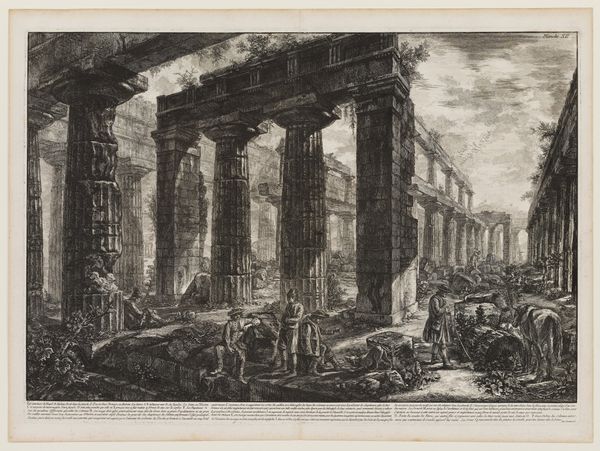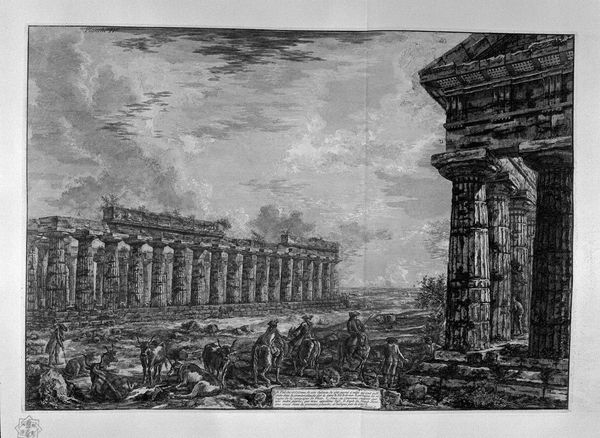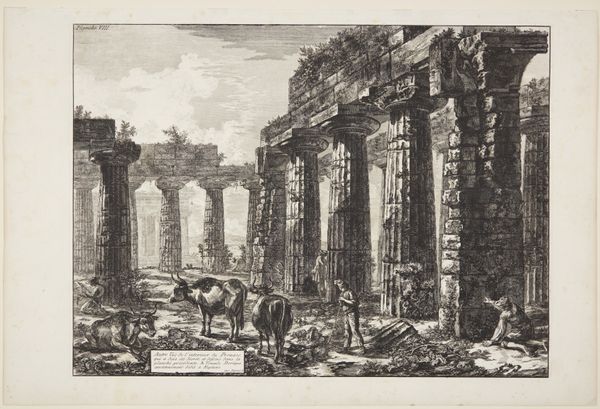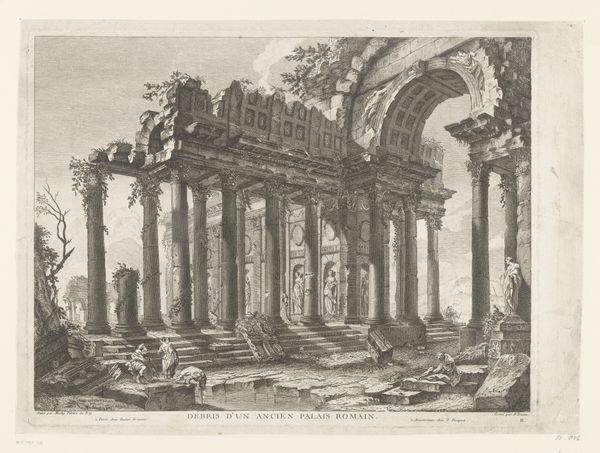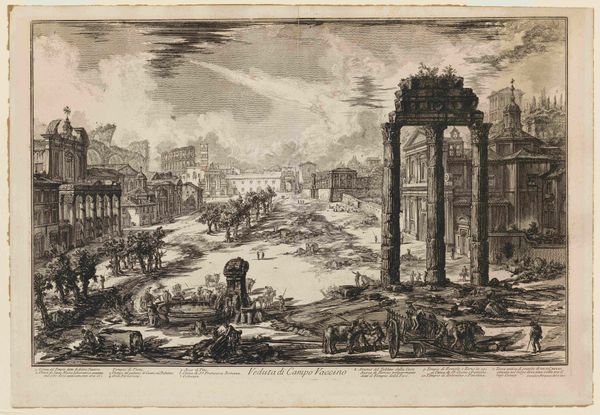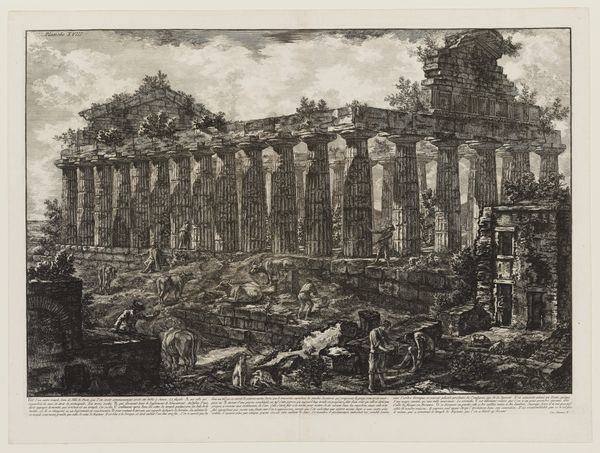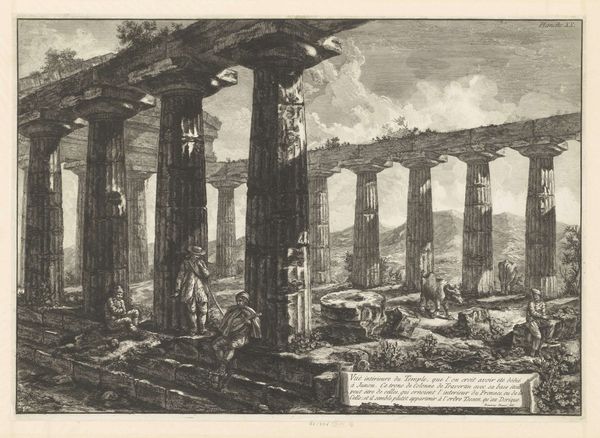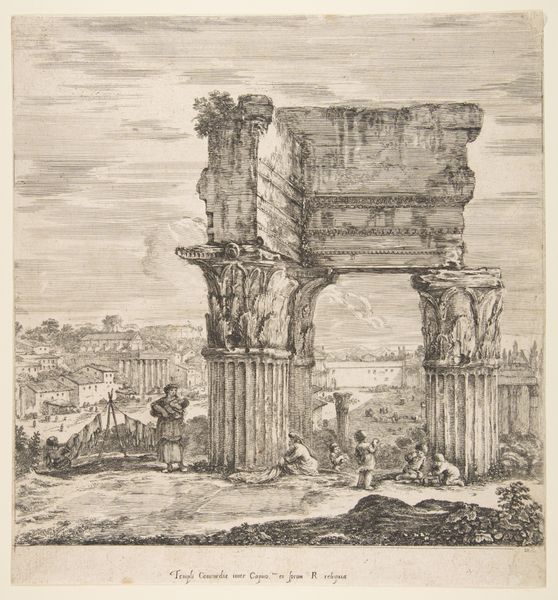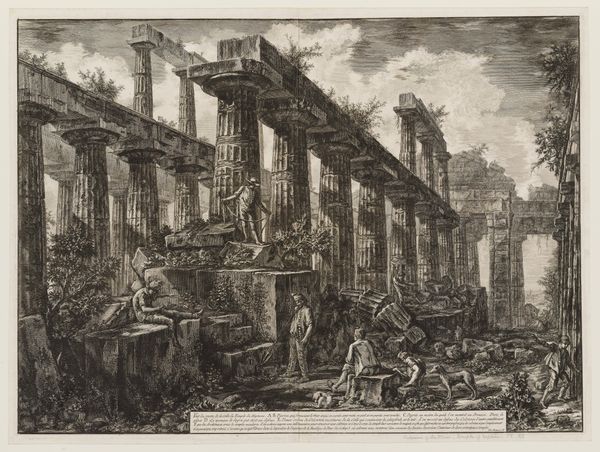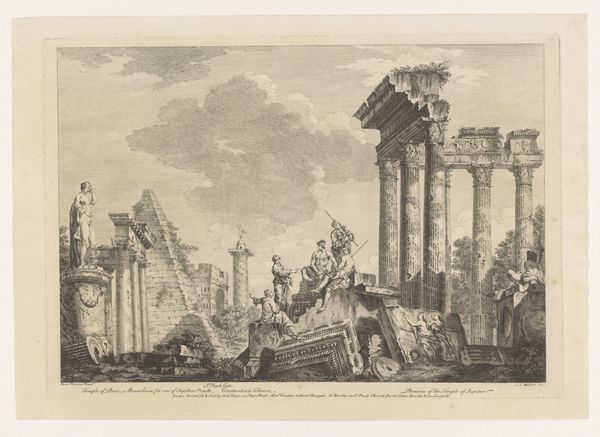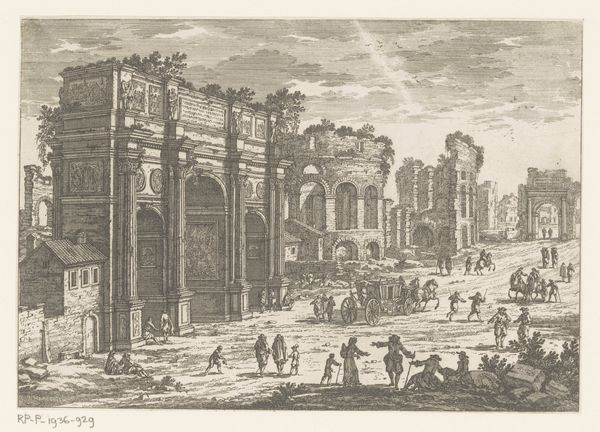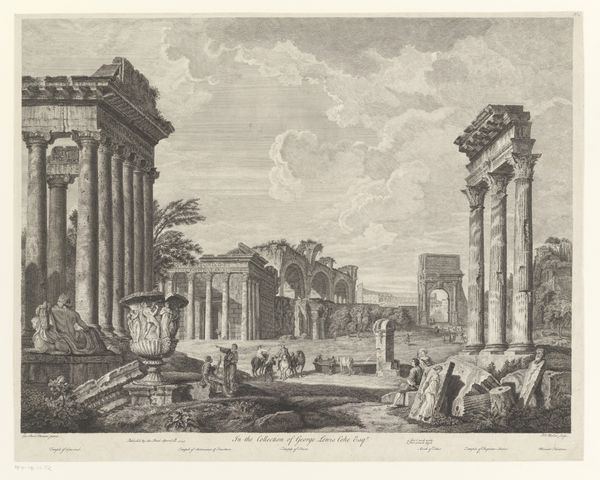
print, etching, architecture
# print
#
etching
#
landscape
#
classical-realism
#
history-painting
#
italian-renaissance
#
italy
#
architecture
Dimensions: 18 7/8 x 26 11/16 in. (47.94 x 67.79 cm) (plate)21 1/16 x 28 1/4 in. (53.5 x 71.76 cm) (sheet)
Copyright: Public Domain
Curator: Before us is Giovanni Battista Piranesi’s "View of Eighteen Columns," an etching from around the 18th century, held here at the Minneapolis Institute of Art. What's your immediate impression? Editor: Ruins. Melancholy, yes, but there’s an undeniable grandeur here. The strong verticals of those massive columns against the vast sky—it's compositionally powerful, a calculated use of light and shadow. Curator: The ruined architecture evokes the Roman Empire, suggesting decline and the inevitable decay of even the most powerful civilizations. But it also reveals something deeper: the endurance of architectural ideas and forms, the continuity between antiquity and modernity. Editor: Continuity, definitely, but there's also that stark contrast in scale. The tiny figures in the foreground seem dwarfed, overpowered by these massive relics. This is deliberate; it emphasizes the temporal gap, our own smallness in the face of history and its monuments. Curator: Those figures and their livestock within the scene underscore themes of transience and persistence. Humanity's relationship with ruins, isn't it always layered with admiration, exploitation, and the weight of what came before? Editor: Yes, Piranesi’s meticulous detail in etching the textures of the stone, the cracks and imperfections, adds a layer of realism. It transforms the etching into something more than a romantic landscape – it is a raw and immediate experience. You feel the material history. Curator: And, if you note the subtle perspective shifts and exaggerations, one feels that the image invites not only historical inquiry but imaginative travel. We are observers transported to a place suspended between reality and the romantic vision of a lost civilization. Editor: A kind of augmented reality, before its time. Piranesi uses purely visual means, and masterful command of line, to evoke not just what's seen, but what it felt like to witness. It's a masterful composition of scale, light, shadow, and detail. Curator: Indeed. Its resonance rests on the enduring themes it provokes – mortality, memory, and the ambition to create structures and legacies that withstand time. Editor: And its masterful construction helps viewers encounter those reflections.
Comments
No comments
Be the first to comment and join the conversation on the ultimate creative platform.
